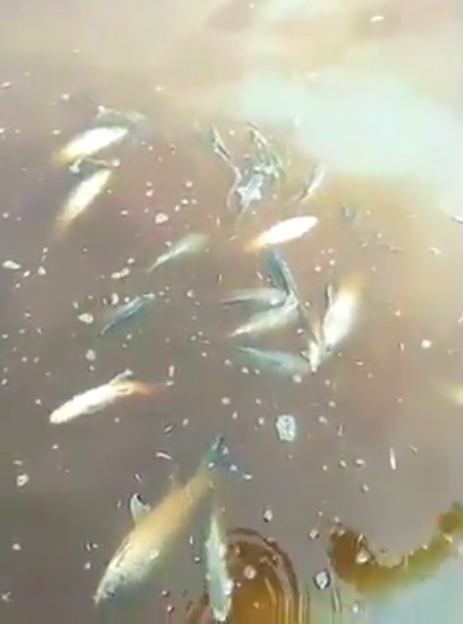On the planet earth, everybody has rights to live in the environment either they are from plants or animal origin. Over the many years, human activities over nature have become surprisingly increase which can massive impacts on the ecosystem. In every single creature on the earth depend upon each other as for food or survival. One of the major river Beas in Punjab (originate from the Rohtang Pass from Himachal Pradesh which covered the 470 km distance and discharges into river Sutlej near Harikepattan, Punjab) has famous for the habitat of several aquatic plants and animals and irrigation of agricultural crop nearby areas and income sources of several fish farmers are depend upon this river. The quantity of the water in river Beas is quite good at this season (May to August) which strengthens the further canals water and other human activities.
On 18, May 2018, the mass mortality of fish was occurred in the river Beas due to leakage of the large quantity of molasses-a chemical liquid waste coming from a sugar mill along the shore into the river resulting in water contamination.The byproduct of sugar factories named as molasses or black treacle (viscous product resulting from refining sugarcane into sugar) came from the ‘Chadha Sugar Industries Private Limited’ located at KiriAfgana village in Gurdaspur district which was reported to have affected over 30km of the river stretch.The administration refuses all the charges and claimed that it was an accidental release. However, the anthropogenic activities such as plastics including microplastics, thermal pollution, industrial effluents, pesticides, antibiotics, organophosphates, chemotherapy agents, toxic metals and others are already invading the aquatic environment to some extended level.
The scientists from the Guru AngadDev Veterinary and Animal Sciences University (GADVASU) has investigated the water samples of the river, resulting in lowering the dissolved oxygen (DO) levels to reach beyond the critical limits and the water becomes acidic and biological oxygen demand (BOD) has apparently high. The colour of the water was dark brown due to a mixing of the liquid molasses which had affected about 25-30 km of the river stretch. It was found due to direct discharges of industrial and domestic sewage at upstream points indicate the pollution of Kanjli wetland, which is a part of the Beas River basin. Anumber of dead fishes include Carps (catla, rohu, mrigal, grass carp, silver carp, common carp and other minor carp sps), catfish (Seenghala, Singhi, Malhi, Pabda catfish) and other weed fish such as chela and Puntius fish species were floating on the surface of the water body. The numerous amounts of fishes with different sizes were found near the bank of the river. The other aquatic organism such as plankton, benthos, periphyton, Molluscs, crustaceans, aquatic plants and microorganism has also been affected. The dead organisms floated over the water surface have a clear invitation for the growth of pathogens which may further risk to the waterborne infection.The chances of the disease outbreak are more, due to afavourable condition for the microorganism such as Aeromonas, Staphylococcus,Pseudomonas, Salmonella, Escherichia coli and other fungal species Branchiomyces, Saprolegniaand other etc.
The water and aquatic organism are potentially affected; and loss of habitat for several survival species for a period of the time. Due to its mixing of liquid untreated waste, the pH of the water was around 4.0-5.0 (acid death point occur), which is unsuitable for the drinking purpose and other household activities. The leaching effects of this waste sludge may also degrade the soil fertility and their organisms. The river Beas has a habitat of the numbers of the migratory birds coming from the overseas countries. Some of the fishes species such as carps, catfish and other fish has reached his maturing stage and lay the eggs in the upcoming months; due to leakage of the molasses from the nearby established industry, its disrupt the breeding season as well as killing of the many male and female brooders which halt the reproduction process and their generations. This huge loss to the environment and human are difficult to pay back and will suffer further continuously over the period of time. Deputy commissioners of the affected districts issued a warning to people to not eat or sell dead fish and stop using river water for own consumption or giving river water to cattle for drinking till is cleaned.
For instance, there is need to take a serious action regarding this activity by the department of wildlife and forest conservationand Punjab control pollution boardand make a contribution in every possible way to minimize the effect of this to the other aquatic organism, and further,will establish a new strategies with strictly implementation and regularly monitoring.
